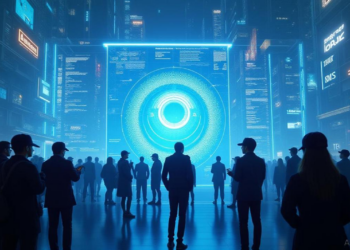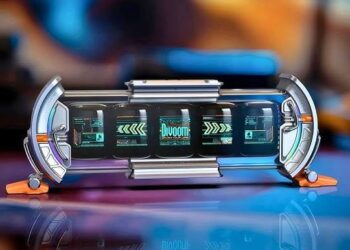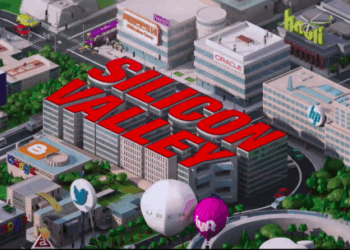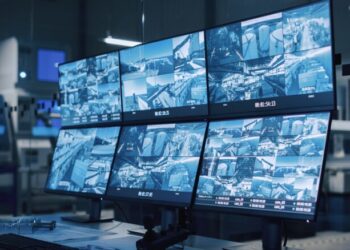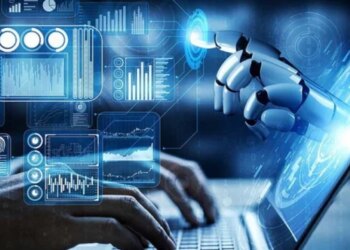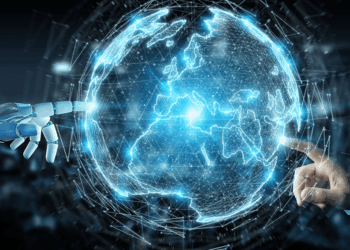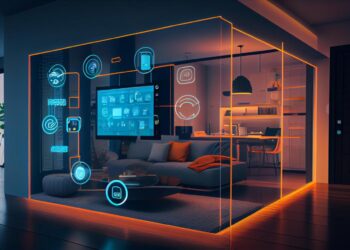The age of robotics is no longer a distant sci-fi fantasy; it’s a rapidly accelerating reality fundamentally reshaping industries, homes, and even our understanding of what’s possible. Far beyond simple mechanical arms, modern robotics is characterized by intelligent automation, driven by sophisticated sensors, advanced computing, and the transformative power of Artificial Intelligence (AI). These machines are not just performing repetitive tasks; they’re learning, adapting, and collaborating, leading to unprecedented levels of efficiency, precision, and safety across a multitude of sectors. This comprehensive article delves into the fascinating world of intelligent automation through robotics, dissecting its core technological pillars, the profound benefits it delivers, the significant challenges it faces, and the exciting future it promises.
The Essence of Intelligent Automation in Robotics
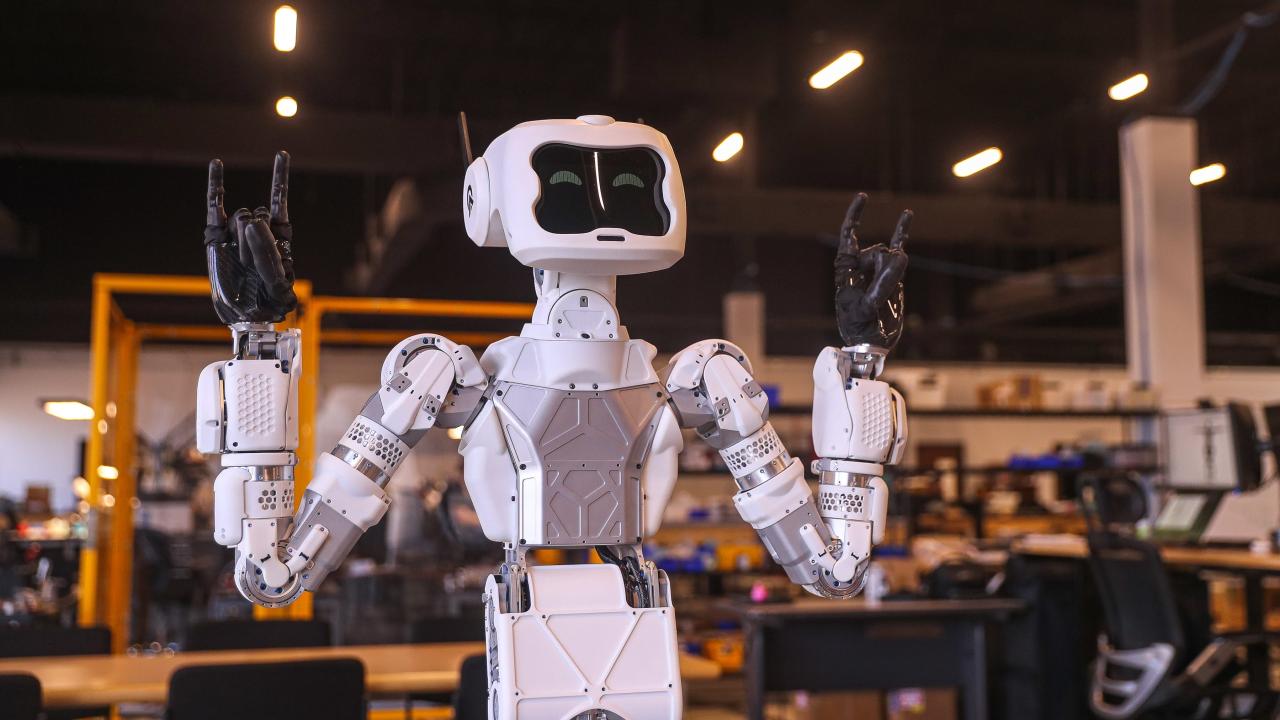
At its heart, intelligent automation in robotics refers to machines that can perform tasks with a degree of autonomy, adaptability, and learning that goes beyond pre-programmed instructions. It’s the fusion of robotics (the physical machine) with AI (the intelligence) that unlocks true automated potential.
A. Advanced Sensing Capabilities: Robots rely on an array of sensors to perceive their environment and gather data for intelligent decision-making. These include:
- Vision Systems (Cameras): Employed for object recognition, navigation, quality inspection, and grasping. Often augmented with Computer Vision AI to interpret complex visual data.
- Lidar and Radar: Used for precise mapping, obstacle detection, and navigation in complex or dynamic environments, crucial for autonomous mobile robots.
- Force/Torque Sensors: Enable robots to “feel” forces, crucial for delicate manipulation tasks (e.g., assembly, surgery) and safe human-robot interaction.
- Tactile Sensors: Provide robots with a sense of touch, allowing them to grasp objects with appropriate pressure and identify textures.
- Proprioceptive Sensors: Internal sensors (encoders, gyroscopes, accelerometers) that provide information about the robot’s own position, speed, and orientation.
B. High-Performance Processors and AI Accelerators: Intelligent robots require immense computational power to process sensor data, run complex AI algorithms, and execute real-time control. This often involves specialized hardware like Graphics Processing Units (GPUs) or dedicated AI chips optimized for machine learning tasks.
C. Artificial Intelligence (AI) Algorithms: AI is the brain of intelligent robots, enabling:
- Machine Learning (ML): Allows robots to learn from data, improving performance over time. This includes learning optimal grasping strategies, navigation paths, or even human preferences.
- Deep Learning (DL): A subset of ML, particularly effective for tasks like image recognition (e.g., identifying defects on a production line) and natural language processing (for human-robot interaction).
- Reinforcement Learning (RL): Enables robots to learn through trial and error, optimizing their actions to achieve a goal in a dynamic environment, often used in complex manipulation or locomotion.
- Path Planning and Navigation Algorithms: For mobile robots, these algorithms allow them to find optimal routes, avoid obstacles, and adapt to changing environments.
D. Advanced Actuation Systems: These are the “muscles” that enable robot movement and manipulation. Intelligent robots use sophisticated motors, gears, and sometimes pneumatic or hydraulic systems that offer precision, speed, and force control, often with haptic feedback capabilities.
E. Human-Robot Interaction (HRI) Interfaces: For robots to work effectively alongside humans, intuitive interfaces are crucial. This includes:
- Voice Recognition and Synthesis: Allowing humans to communicate naturally with robots.
- Gesture Recognition: Enabling robots to understand human gestures and cues.
- Graphical User Interfaces (GUIs): For programming, monitoring, and controlling robots.
- Safety Features: Proximity sensors, force limits, and collaborative modes ensuring safe operation around humans.
F. Connectivity and Cloud Robotics: Many intelligent robots are connected to the cloud, enabling:
- Data Sharing: Robots can upload data for further analysis, shared learning across a fleet, and remote diagnostics.
- Software Updates: Over-the-air updates ensure robots always have the latest features and bug fixes.
- Cloud Computing: Offloading complex computations to powerful cloud servers, allowing smaller, less powerful robots to perform sophisticated tasks.
Diverse Applications of Intelligent Robotics
The impact of intelligent automation is already being felt across a vast array of sectors, extending far beyond traditional manufacturing.
Manufacturing and Industrial Automation
This is where robotics first took root, and intelligent automation is taking it to new heights.
- Collaborative Robots (Cobots): Designed to work safely alongside human operators without cages, performing tasks like assembly, packaging, and quality inspection, enhancing productivity and reducing strain on human workers.
- Autonomous Mobile Robots (AMRs): Navigate warehouses and factory floors autonomously, transporting materials and goods, optimizing logistics, and increasing throughput.
- Precision Assembly: Robots with advanced vision and force sensing can perform highly delicate and precise assembly tasks, often surpassing human capabilities in consistency and speed.
- Quality Control and Inspection: AI-powered vision systems enable robots to quickly and accurately inspect products for defects, ensuring high standards.
- Welding and Painting: Robots perform these tasks with extreme precision and consistency, ensuring uniform quality and reducing human exposure to hazardous environments.
Healthcare and Medical Applications
Robotics is transforming patient care, surgery, and rehabilitation.
- Surgical Robots: Assist surgeons with minimally invasive procedures, offering enhanced precision, dexterity, and visualization (e.g., Da Vinci Surgical System).
- Hospital Logistics Robots: Automate the delivery of medications, lab samples, and linens within hospitals, freeing up staff for patient care.
- Rehabilitation Robots: Aid patients in physical therapy, providing repetitive exercises, gait training, and objective progress tracking.
- Telemedicine and Remote Presence Robots: Allow doctors to remotely consult with patients or supervise procedures, expanding access to specialized care.
- Disinfection Robots: Use UV-C light or other methods to autonomously disinfect hospital rooms, improving hygiene and patient safety.
Logistics and Warehousing
Intelligent robots are revolutionizing supply chains, making them faster, more efficient, and less error-prone.
- Automated Storage and Retrieval Systems (AS/RS): Robots manage vast warehouses, precisely storing and retrieving items, optimizing space utilization.
- Goods-to-Person Robots: Bring shelves or specific items directly to human pickers, significantly speeding up order fulfillment.
- Sorting and Packaging Robots: Rapidly sort packages based on destination and prepare them for shipment, essential for e-commerce.
- Last-Mile Delivery Robots: Autonomous ground vehicles or drones are being tested for delivering packages directly to consumers’ doorsteps.
Service and Retail
Robots are increasingly interacting with the public in service roles.
- Customer Service Robots: Greet customers, provide information, and guide them in hotels, airports, and retail stores.
- Cleaning and Maintenance Robots: Autonomously clean large public spaces like airports, malls, and offices.
- Robotic Baristas and Chefs: Prepare food and beverages with consistency and speed in controlled environments.
- Inventory Management Robots: Scan shelves in retail stores to check stock levels, identify misplaced items, and flag out-of-stock products.
Exploration and Hazardous Environments
Robots excel in places too dangerous or inaccessible for humans.
- Space Exploration Rovers: Explore planetary surfaces, collect samples, and send data back to Earth (e.g., Mars rovers).
- Underwater Exploration: Remotely Operated Vehicles (ROVs) and Autonomous Underwater Vehicles (AUVs) explore ocean depths, inspect infrastructure, and map the seabed.
- Disaster Response Robots: Navigate collapsed buildings, assess damage, locate survivors, and handle hazardous materials after natural disasters or industrial accidents.
- Demining Robots: Detect and neutralize explosive devices, protecting human lives.
Agriculture (Agri-Robotics)
Robots are bringing precision and efficiency to farming.
- Automated Planting and Harvesting: Robots can precisely plant seeds and pick ripe fruits/vegetables, reducing labor costs and improving yield.
- Weeding Robots: Use vision systems to identify and remove weeds without herbicides, promoting sustainable farming.
- Crop Monitoring: Drones and ground robots collect data on plant health, soil conditions, and pest infestations, enabling targeted interventions.
- Livestock Management: Robots can milk cows, monitor animal health, and even herd livestock.
The Transformative Benefits of Intelligent Automation

The integration of intelligent robotics brings about a profound shift, offering advantages that extend far beyond mere cost savings.
A. Increased Efficiency and Productivity:
- 24/7 Operation: Robots don’t tire, allowing for continuous operation, leading to higher throughput and faster production cycles.
- Reduced Cycle Times: Robots perform tasks with speed and consistency, significantly reducing manufacturing and logistics cycle times.
- Optimized Resource Utilization: AI-powered robots can optimize material usage, reduce waste, and improve energy efficiency in industrial processes.
B. Enhanced Precision and Quality:
- Unwavering Accuracy: Robots perform repetitive tasks with millimeter-level precision and consistency, eliminating human error and ensuring uniform product quality.
- Improved Inspection: AI vision systems can detect minute defects invisible to the human eye, leading to higher quality control.
- Reduced Rework and Scrap: Higher precision means fewer errors and less wasted material.
C. Improved Safety and Ergonomics:
- Hazardous Environment Work: Robots can perform tasks in dangerous, toxic, or extreme environments (e.g., handling hazardous materials, working at heights, in extreme temperatures), protecting human workers from harm.
- Reduced Repetitive Strain Injuries (RSIs): By taking over monotonous and physically demanding tasks, robots reduce the risk of musculoskeletal disorders for human employees.
- Elimination of Accidents: Automation reduces the likelihood of accidents caused by human fatigue or inattention in industrial settings.
D. Cost Reduction and Economic Competitiveness:
- Lower Labor Costs: While initial investment can be high, robots offer long-term savings on labor, particularly for repetitive or dangerous tasks.
- Increased Output: Higher productivity per hour translates to more goods produced, leading to greater revenue potential.
- Competitive Advantage: Companies adopting intelligent automation can outcompete those relying on less efficient, manual processes.
E. Enhanced Innovation and Flexibility:
- Agility in Production: Robots can be reprogrammed and redeployed for different tasks relatively quickly, allowing manufacturers to adapt to changing market demands and produce customized products.
- Spurring Research and Development: The challenges of robotics drive innovation in AI, materials science, sensor technology, and more.
- Mass Customization: Robots enable the efficient production of highly customized products, meeting individual consumer preferences without significant cost increases.
F. Addressing Labor Shortages:
- Filling Vacant Roles: In industries facing labor shortages for difficult or undesirable jobs (e.g., agriculture, elder care), robots can fill critical gaps.
- Upskilling Human Workforce: As robots take over repetitive tasks, human workers can be retrained for higher-value roles involving oversight, programming, and maintenance of robotic systems.
Navigating the Challenges of Intelligent Automation
Despite the exciting promise, the journey towards widespread intelligent automation is not without significant hurdles that require careful planning and strategic solutions.
A. High Initial Investment and Return on Investment (ROI):
- Prohibitive Costs: Acquiring and implementing advanced robotic systems, including specialized programming and integration, can be extremely expensive, especially for small and medium-sized enterprises (SMEs).
- Uncertain ROI: Calculating the exact return on investment can be complex, especially when considering intangible benefits like improved safety or quality.
B. Complexity and Integration Challenges:
- Programming Complexity: While intuitive interfaces are improving, programming and integrating complex robotic systems into existing workflows can be challenging and require specialized expertise.
- Interoperability: Different robot manufacturers or software platforms may not communicate seamlessly, leading to integration headaches.
- Maintenance and Downtime: Highly sophisticated robots require skilled technicians for maintenance and troubleshooting. Downtime can be costly.
C. Job Displacement and Workforce Transformation:
- Fear of Automation: A primary societal concern is that intelligent automation will lead to widespread job losses, particularly for low-skilled, repetitive tasks.
- Need for Reskilling: Governments and industries must invest heavily in education, training, and reskilling programs to prepare the workforce for new roles created by automation.
- Ethical Obligation: Addressing the social impact of automation and ensuring a just transition for displaced workers is a significant ethical challenge.
D. Safety and Ethical Concerns:
- Human-Robot Safety: While cobots are designed for safety, ensuring zero risk in shared human-robot workspaces remains a critical challenge, especially with increasingly autonomous systems.
- Ethical Decision-Making: For fully autonomous robots (e.g., self-driving cars, military robots), programming ethical decision-making in unforeseen circumstances is a profound philosophical and engineering challenge.
- Accountability: Determining legal and moral accountability when an autonomous robot makes an error or causes harm is a complex legal issue.
E. Data Privacy and Cybersecurity:
- Sensitive Data: Robots in homes, healthcare, or public spaces can collect highly sensitive personal data. Ensuring the privacy and security of this data is paramount.
- Vulnerability to Hacking: Connected robots are susceptible to cyberattacks, which could lead to industrial espionage, system disruption, or even physical harm if control is compromised.
F. Energy Consumption:
- Power Demands: Operating large fleets of industrial robots and powerful computing systems requires significant energy, raising concerns about their environmental footprint if not powered by renewable sources.
G. Public Acceptance and Trust:
- “Uncanny Valley” Effect: For human-like robots, achieving a level of realism without triggering discomfort or unease in humans is a design challenge.
- Distrust of Autonomy: Gaining public trust in autonomous systems, particularly in critical applications like healthcare or transportation, is an ongoing process that requires transparency and a proven track record of safety.
- Misconceptions: Overcoming popular misconceptions about robots (e.g., fears of “robot overlords”) is necessary for broader acceptance.
The Future Trajectory of Intelligent Robotics
The evolution of intelligent automation is far from over. The coming decades will witness even more profound advancements, leading to robots that are more versatile, intuitive, and seamlessly integrated into our lives.
A. Increased Autonomy and Adaptability: Robots will become increasingly capable of operating in unstructured, unpredictable environments without constant human supervision. They will adapt to changing conditions, learn from new experiences, and solve novel problems.
B. Enhanced Human-Robot Collaboration: Cobots will become even more sophisticated, understanding human intent through advanced AI, gestures, and voice, allowing for truly collaborative and fluid work environments where humans and robots augment each other’s capabilities.
C. Robots as Personal Assistants: Beyond industrial settings, personal robots will become more common in homes, providing assistance for the elderly, individuals with disabilities, or simply offering companionship and performing household chores.
D. Swarm Robotics and Collective Intelligence: Large groups of simple robots will work together to achieve complex tasks, exhibiting emergent collective intelligence. This could be applied to large-scale construction, environmental monitoring, or search and rescue operations.
E. Soft Robotics and Bio-Inspired Design: Inspired by biological organisms, soft robots made from flexible materials will be more adaptable, safer for human interaction, and capable of navigating complex terrains, opening new applications in delicate manipulation and medical fields.
F. AI-Driven Self-Learning and Self-Healing Robots: Future robots will have enhanced capabilities for self-diagnosis, autonomous repair (e.g., using 3D printing), and continuous self-optimization through advanced AI, minimizing downtime and maintenance.
G. Ethical AI Integration: Significant advancements will be made in integrating ethical frameworks directly into robot programming, allowing them to make more morally sound decisions in complex scenarios.
Conclusion
The relentless march of intelligent automation is transforming our world at an unprecedented pace. From the factory floor to the operating room, from deep space to our living rooms, robots are poised to redefine efficiency, safety, and human potential. While challenges remain, the future promises a symbiotic relationship between humans and increasingly intelligent machines, unlocking new frontiers of innovation and progress for humanity.


